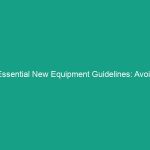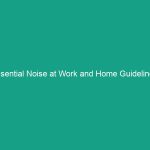“`html
Essential Nine Basic Construction Safety Rules You Must Know Today
Good morning team,
Today, we are going to discuss a topic that is fundamental to our work and well-being: the Essential Nine Basic Construction Safety Rules You Must Know Today. Safety is not just a requirement; it is a commitment we owe to ourselves, our colleagues, and our families. Understanding and applying these rules can prevent accidents and ensure a safer workplace for everyone.
Understanding Essential Nine Basic Construction Safety Rules
The Essential Nine Basic Construction Safety Rules are a set of guidelines designed to protect workers in the construction industry. These rules are crucial in minimizing accidents, injuries, and fatalities on the job site. Each rule addresses specific Hazards we face daily, ensuring that we operate safely and efficiently.
Many people believe that safety rules are just an inconvenience or red tape; however, these guidelines are in place to save lives and prevent injuries. Ignoring them can lead to devastating consequences, not just for individuals but for entire teams and projects.
Key Hazards, Risks, and Safety Considerations
In the construction industry, we encounter a variety of hazards, including:
- Falls: One of the leading causes of injuries and fatalities.
- Electrical Hazards: Risks associated with live wires and improper grounding.
- Heavy machinery: Risks from operating or being near moving equipment.
- Hazardous materials: Exposure to toxic substances and chemicals.
Ignoring safety protocols can result in serious injuries, legal repercussions, and financial losses. For instance, a fall from height can lead to permanent disability or even death. Understanding these risks helps us recognize the importance of adhering to safety rules.
Best Practices, Procedures, & Actionable Advice
Now, let’s delve into the Essential Nine Basic Construction Safety Rules that you must know:
1. Always Wear Personal Protective Equipment (PPE)
Wearing PPE is the first line of defense against workplace hazards. Ensure that you wear the correct gear for your specific job, including hard hats, safety glasses, gloves, and steel-toed boots. Regularly inspect your PPE for any signs of wear or damage.
2. Follow Proper Lifting Techniques
Back injuries are common in construction. When lifting heavy objects, always bend your knees, keep your back straight, and lift with your legs, not your back. If an object is too heavy, ask for help or use mechanical assistance.
3. Maintain a Clean and Organized Work Area
A cluttered workspace can lead to accidents. Keep tools, materials, and walkways clear. Regularly dispose of waste materials and ensure that all equipment is returned to its proper place after use.
4. Be Aware of Your Surroundings
Situational awareness is key to preventing accidents. Always be mindful of where you are and what is happening around you. Watch for moving equipment, overhead hazards, and potential slip or trip hazards.
5. Report Unsafe Conditions
If you notice any unsafe conditions or behaviors, report them immediately to your supervisor. It’s everyone’s responsibility to maintain a safe work environment. Don’t assume someone else will take care of it.
6. Follow Safety Protocols for Equipment Use
Before operating any machinery, ensure you are trained and authorized. Always follow the manufacturer’s instructions and Safety Guidelines. Never operate equipment if you are tired or under the influence of drugs or alcohol.
7. Use Fall Protection Systems
When working at heights, use appropriate fall protection systems such as harnesses, guardrails, or safety nets. Ensure that these systems are inspected regularly and used correctly.
8. Stay Hydrated and Take Breaks
Working in construction can be physically demanding. Drink plenty of water to stay hydrated and take regular breaks to rest and recover. This helps prevent fatigue-related accidents.
9. Participate in Safety Training
Continuous safety training is essential. Participate in safety meetings, workshops, and training sessions regularly to stay informed about Best Practices and new safety protocols.
Regulations, Standards, and Compliance
It’s vital to understand that these rules are not just recommendations; they are backed by Regulations from organizations such as OSHA (Occupational Safety and Health Administration) and other safety Standards. Compliance with these regulations is not only mandatory but crucial for ensuring Workplace Safety.
Failure to comply can lead to fines, project shutdowns, and most importantly, injuries. Understanding these regulations helps maintain a culture of safety and accountability on the job site.
Employee Engagement & Discussion
Let’s take a moment to reflect on our experiences. What safety challenges have you encountered related to these rules? How can we improve our safety protocols on-site? Your input is invaluable in fostering a safer work environment.
Conclusion & Key Takeaways
In summary, the Essential Nine Basic Construction Safety Rules You Must Know Today are vital for protecting yourself and your colleagues. By adhering to these guidelines, we can significantly reduce the risk of accidents and injuries on the job site. Remember, safety is not just a rule; it’s a culture that we must all embrace.
Thank you for your attention today. Let’s prioritize safety in everything we do and ensure that we all return home safely to our loved ones at the end of each day.
“`


